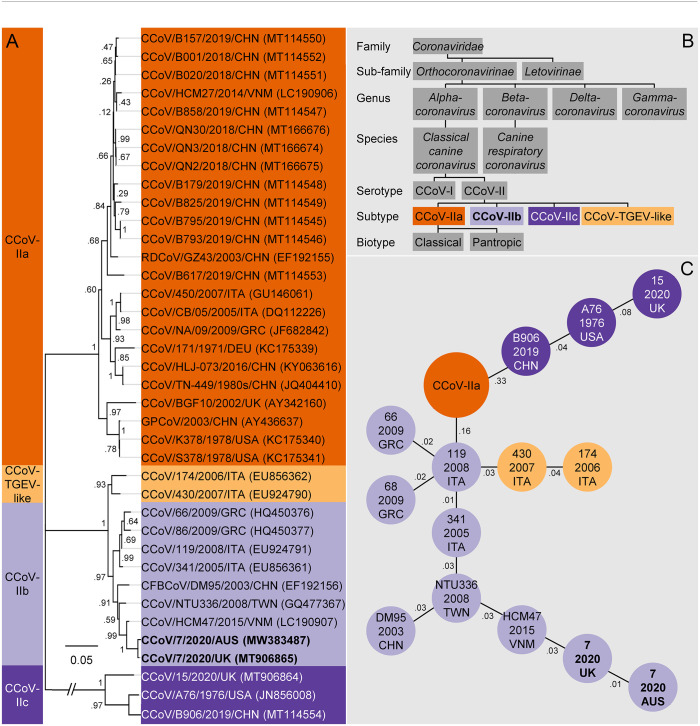Figure 1.
A. Evolutionary history of type II canine coronaviruses (CCoVs) inferred using the maximum likelihood method and the S gene (1,512 aa). The coronavirus first identified in Queensland, February 2020, and genotyped in this report (CCoV/7/2020/AUS, GenBank MW383487, bold), locates in a clade with other type IIb CCoVs from Taiwan and Vietnam, but is almost identical (99.7%) to a variant associated with a concurrent outbreak of severe vomiting in dogs from the United Kingdom (December 2019–March 2020). B. The hierarchical structure of CCoVs within the family Coronaviridae. The CCoV genotyped in this report (CCoV-IIb, bold), was a classical CCoV of serotype II, distinguished by the deletion of open reading frame 3 (ORF3) and distinctive motifs from the S glycoprotein cleavage sites. It is generally thought of as causing a mild but highly contagious enteric disease. C. A minimum spanning tree connecting CCoV variants that have the minimum genetic distance.

